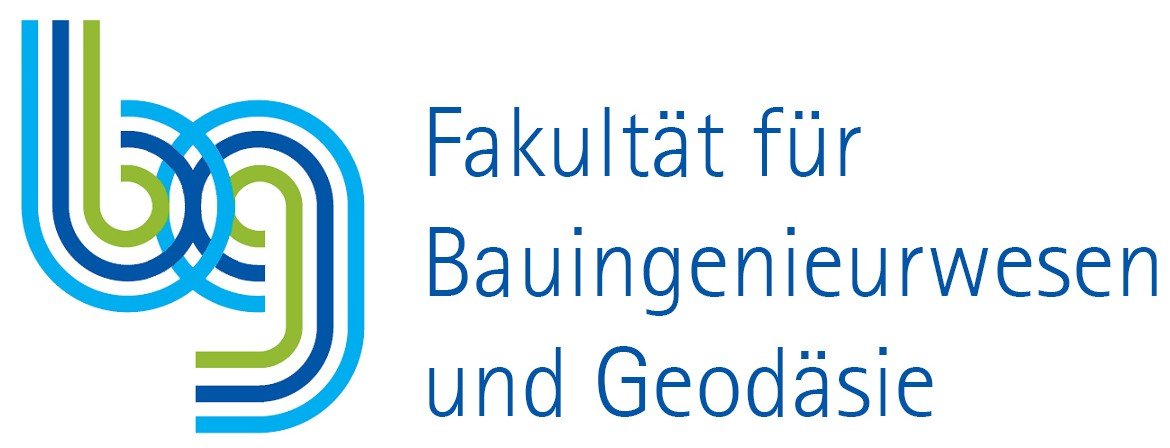GeoWerkstatt-Projekt des Monats Mai 2025
Projekt: GeoPaw: Robotergestützte Qualitätsprüfung von Gebäuden
Forschende: Dr.-Ing. Rozhin Moftizadeh, M.Sc. Christian Hartberger
Projektidee: Qualitätskontrolle von Gebäudekomponenten mit vierbeinigen Robotern in anspruchsvollen Umgebungen.
Seit den Anfängen des Bauwesens ist es von zentraler Bedeutung, dass sich alle, die ein Gebäude nutzen, auf dessen Zuverlässigkeit und Sicherheit verlassen können. Die Qualitätskontrolle spielt dabei eine entscheidende Rolle: Bauingenieur*innen begehen die Baustellen und bewerten Bauteile manuell direkt vor Ort.
Solche manuellen Inspektionen bieten zwar gewisse Vorteile – die Ingenieur*innen können sich flexibel durch die Gebäude bewegen und ihre Erfahrung in die Beurteilung mit einbeziehen. Sie bringen jedoch auch erhebliche Einschränkungen mit sich: Dazu gehören der hohe Zeitaufwand, die körperliche Belastung und die potenziellen Sicherheitsrisiken für die beteiligten Ingenieur*innen. Und Menschen machen auch Fehler - was die Zuverlässigkeit der Inspektion beeinträchtigen kann.
Mit dem Voranschreiten der Automatisierung in der Technik wird ein robotergestützter Ansatz für die Bauwerksinspektion zunehmend realistisch. Ziel dieses Projekts ist es, ein Rahmenkonzept zu entwickeln, bei dem vierbeinige Roboter die Qualitätskontrolle übernehmen und weniger manuelle Eingriffe nötig sind.
Warum vierbeinige Roboter?
Heutzutage gibt es verschiedene mobile Roboter mit unterschiedlichen Eigenschaften. Für den Einsatz auf Baustellen eignen sich vierbeinige Roboter besonders gut. Denn hier ist immer viel los: Arbeiter sind im Einsatz, Baumaschinen fahren hin und her, Materialien werden bewegt und der Boden ist oft uneben. Mobilität und Wendigkeit sind also entscheidend. Anders als Roboter auf Rädern bewegen sich vierbeinige Roboter auf unebenem Gelände sicherer und navigieren flexibel um Hindernisse wie Maschinen und Baupersonal herum.
Aus diesem Grund wird in diesem Projekt der vierbeinige Roboter Unitree B1 eingesetzt (Abbildung 1). Dieser Roboter ist mit verschiedenen Sensoren ausgestattet, mit deren Hilfe er navigiert und seine Umgebung wahrnimmt:
- Über GNSS (Global Navigation Satellite System) und IMU (Inertial Measurement Unit) bestimmt der Roboter seine Position und Ausrichtung
- LiDAR (Light Detection and Ranging) ist ein Sensor, der mithilfe von Laserstrahlen Strecken misst. Damit erhält der Roboter eine detaillierte dreidimensionale (3D) Karte seiner Umgebung – eine sogenannte Punktwolke (Abbildung 2).
- Kameras, die im Robotergehäuse integriert sind, liefern visuelle Informationen aus mehreren Richtungen. Mit insgesamt fünf integrierten Kameras kann der Roboter seine Umgebung aus verschiedenen Blickwinkeln wahrnehmen – vergleichbar mit fünf Augen rund um seinen Körper.


 ©
GIH
©
GIH
Autonome Navigation
Für dieses Projekt ist die Fähigkeit des Roboters, sich autonom auf Baustellen zu bewegen, von zentraler Bedeutung. Das bedeutet, dass er seine Umgebung ohne direkte menschliche Steuerung erkunden kann.
Dafür müssen ihm ständig zuverlässige Positionsdaten zur Verfügung stehen. Die GNSS- und IMU-Sensoren liefern jedoch an Orten mit Gebäuden und anderen hohen Strukturen nicht immer zuverlässige Daten. GNSS-Signale können reflektiert, umgelenkt oder blockiert werden, was zu ungenauen oder nicht verfügbaren Daten führt. IMUs neigen insbesondere durch die sogenannte Sensor-Drift dazu, je mehr Zeit vergeht immer stärkeren Einfluss durch kleine unvermeidbare Messfehler aufzubauen.
Um diesen Herausforderungen zu begegnen, nutzt der Roboter in diesem Projekt LiDAR-Daten zur Navigation. Indem er seine Umgebung mit einem Laser abtastet, kann er seine Position auch dann zuverlässig bestimmen, wenn GNSS-Signale gestört sind.
Das entwickelte Navigationssystem basiert auf einem partikelfilterbasierten Ansatz. Dieses Verfahren ermöglicht eine robuste und flexible Positionsbestimmung auch unter unsicheren oder sich ändernden Bedingungen – ganz ohne vorausgesetzte Annahmen.
Automatisierte Qualitätsprüfung
Sobald sich der Roboter selbstständig bewegen kann, wird die eigentliche Inspektion der Gebäude beginnen. Dabei soll der Roboter die Bauwerke mit Hilfe des LiDAR-Sensors vermessen. Die dabei entstehenden 3D-Daten werden anschließend mit den digitalen Planungsmodellen der Gebäude verglichen. Durch diese Gegenüberstellung können Abweichungen erkannt und die Einhaltung der Qualitätsstandards überprüft werden.
Bedeutung des Projekts
Mit der Umsetzung dieses Projekts soll die Automatisierung von Bauprozessen entscheidend vorangebracht werden. Es soll sowohl die Sicherheit als auch die Effizienz verbessern: Die Inspektionen sollen schneller und konsistenter werden und Bauingenieur*innen müssen sich nicht mehr gefährlichen Baustellenbedingungen aussetzen.
Durch die Verbindung von Robotik, Geodatenverarbeitung und autonomer Navigation soll das GeoPaw-Projekt einen wertvollen Beitrag zu einer sicheren und zuverlässigen Zukunft im Bauwesen leisten.


 ©
GIH
©
GIH


